Coral reefs are vital to marine biodiversity, coastal protection, and human economies—supporting 25% of marine life, buffering storm surges, and sustaining fisheries and tourism. Yet these ecosystems face existential threats from climate change, pollution, and overfishing. Traditional restoration methods—like coral transplantation or artificial reef blocks—struggle to keep up with the scale of degradation.
In response, scientists and conservationists are turning to 3D printing for innovative, rapid, and ecologically tailored solutions. By blending design flexibility with environmentally compatible materials, 3D printed reef structures offer scalable approaches to rebuilding habitat complexity and resilience.
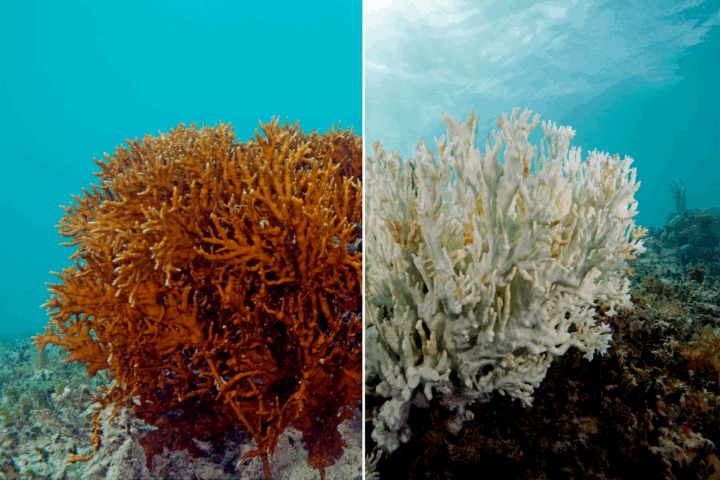
Why 3D Printing Matters
1. Replicating Natural Complexity
Conventional artificial reefs—made from sunken ships, concrete blocks, or tires—often lack the fine textures and intricate voids of natural coral skeletons. With 3D printing, designs can be modeled to mimic coral geometries at multiple scales, from millimeter-sized surface textures that attract coral larvae to larger caves and crevices that shelter fish. This multi-scale fidelity is critical for rebuilding the ecological functions of reefs.
2. Material Innovation for Marine Life
Additive manufacturing enables the use of eco-compatible and bioactive materials. Options include:
-
Ceramic and terracotta: Naturally porous, pH-stable, and similar to coral skeletons, encouraging coral settlement.
-
Bio-concrete and Roman-style cement: Stronger underwater, with mineral compositions that promote calcium carbonate precipitation.
-
Sandstone composites: Provide a natural, inert base that integrates well into seabeds.
-
Calcium carbonate printing: Directly mimics the building blocks of coral skeletons.
These materials not only support marine colonization but also avoid toxic leaching, a major issue with some older artificial reef materials.
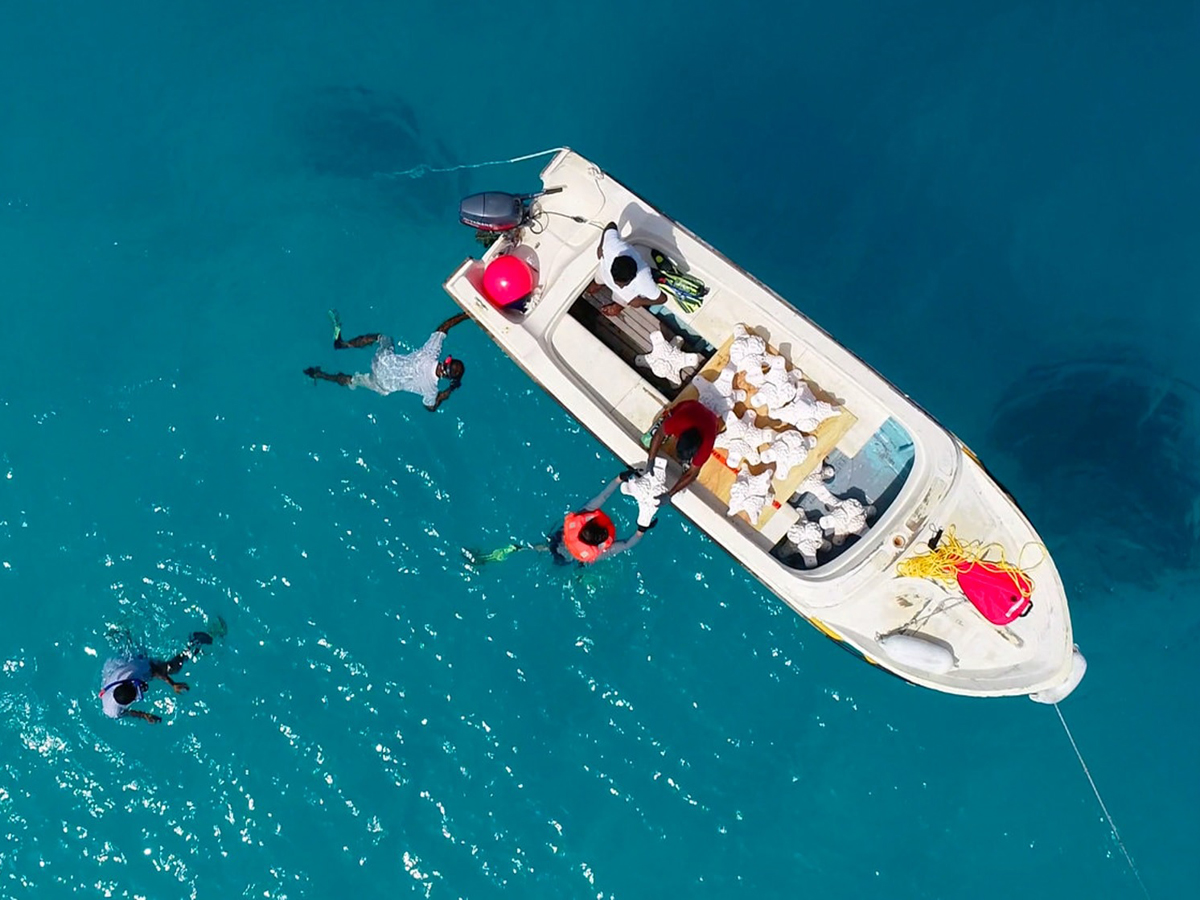
3. Customization and Local Adaptation
Every reef is unique. With digital modeling, 3D printing allows custom reef designs adapted to local environments:
-
Shallow reefs may need wide, stable bases to withstand waves.
-
Deep reefs may benefit from vertical complexity to maximize surface area.
-
Regions with strong currents may use interlocking modules to resist displacement.
Designs can also replicate native coral morphologies, supporting species-specific settlement and helping to restore local biodiversity patterns.
4. Rapid Prototyping and Scalable Deployment
Unlike hand-built concrete molds that require weeks to prepare, digital reef designs can be iterated and printed quickly, then mass-produced using large-format printers. This makes it possible to restore larger reef areas in shorter timeframes, a crucial factor given the speed of reef degradation.
5. Integration with Marine Science and Monitoring
Because every 3D printed reef begins with a digital model, restoration projects gain a precise baseline for monitoring. Researchers can track changes over time—measuring coral growth, fish abundance, and structural integrity—with unparalleled accuracy. Some projects are even embedding IoT sensors into reef modules to collect real-time data on water quality, temperature, and biodiversity.
6. Synergy with Other Conservation Strategies
3D printing is not a replacement for coral nurseries or transplantation—it is a complementary tool. Printed structures can serve as “living scaffolds” where coral fragments from nurseries can be attached, giving them a stable substrate to grow. Over time, these structures become indistinguishable from natural reefs as living corals overgrow the artificial framework.
Expanded Case Studies & News References
1. Aqaba, Jordan – Sperra & Voyacy Regen (July 2025)
Sperra, in partnership with Philippe and Ashlan Cousteau’s Bluetech venture Voyacy Regen, is deploying 3D-printed concrete reef structures using local materials in the Red Sea. The project, backed by the Aqaba Development Corporation, emphasizes rapid fabrication and scalable deployment as part of Jordan’s Vision 2025 environmental initiatives.
2. Grand Isle, Louisiana – “Cajun Coral” Reef (August 2024)
A 10,000-square-foot 3D-printed concrete reef—nicknamed “Cajun Coral”—has been installed inshore to protect over 280 fish species. Funded by Raising Cane’s CEO Todd Graves and created at a Natrx facility, it’s the largest inshore reef installation in that region since 2018.
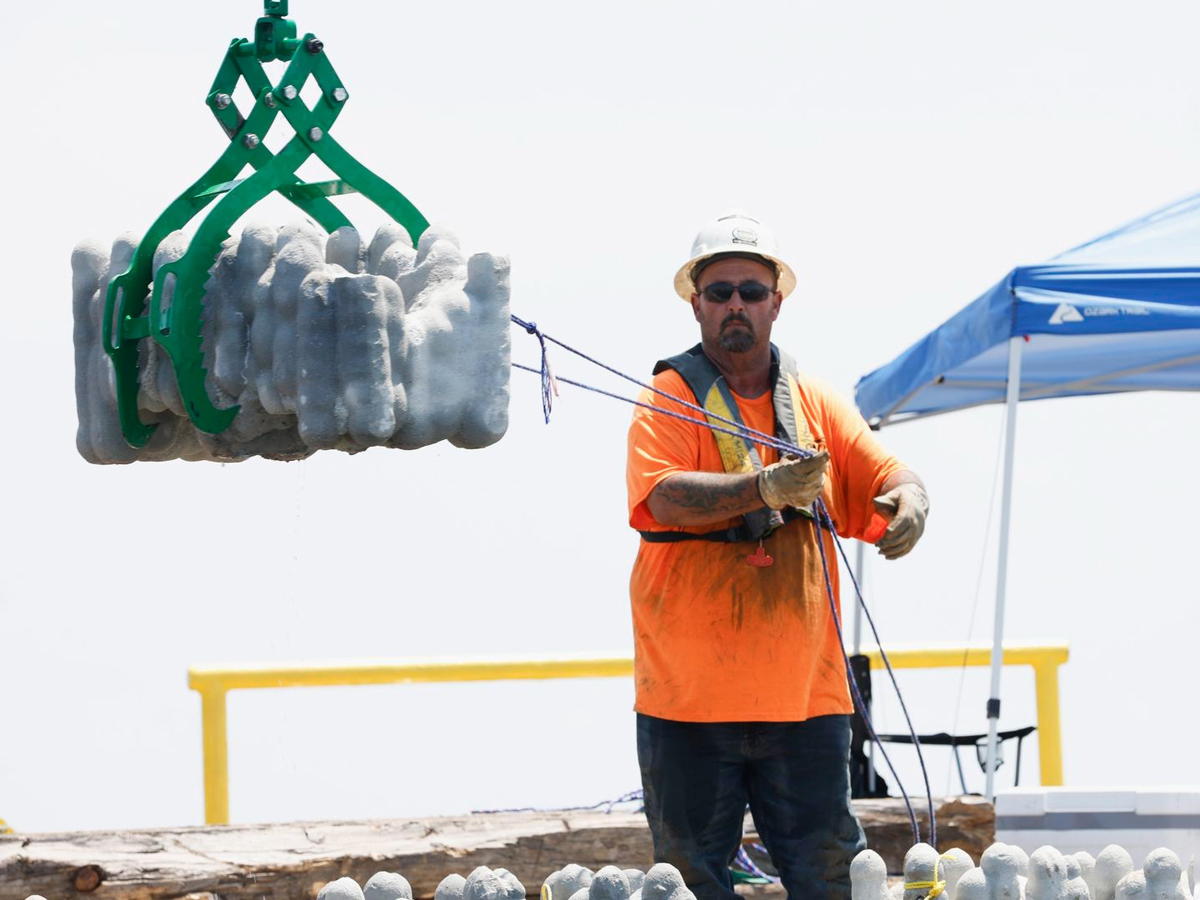
3. Kattegat (Denmark/Sweden) – Ørsted & WWF Denmark
Twelve 1 m³, ceramic-like 3D-printed reef modules were deployed off the Anholt Offshore Wind Farm to rebuild habitat for cod. After two years, surveys (July 2024) documented red algae growth, barnacles, wrasse fish, crustaceans, and evolving microhabitats, confirming ecological success.
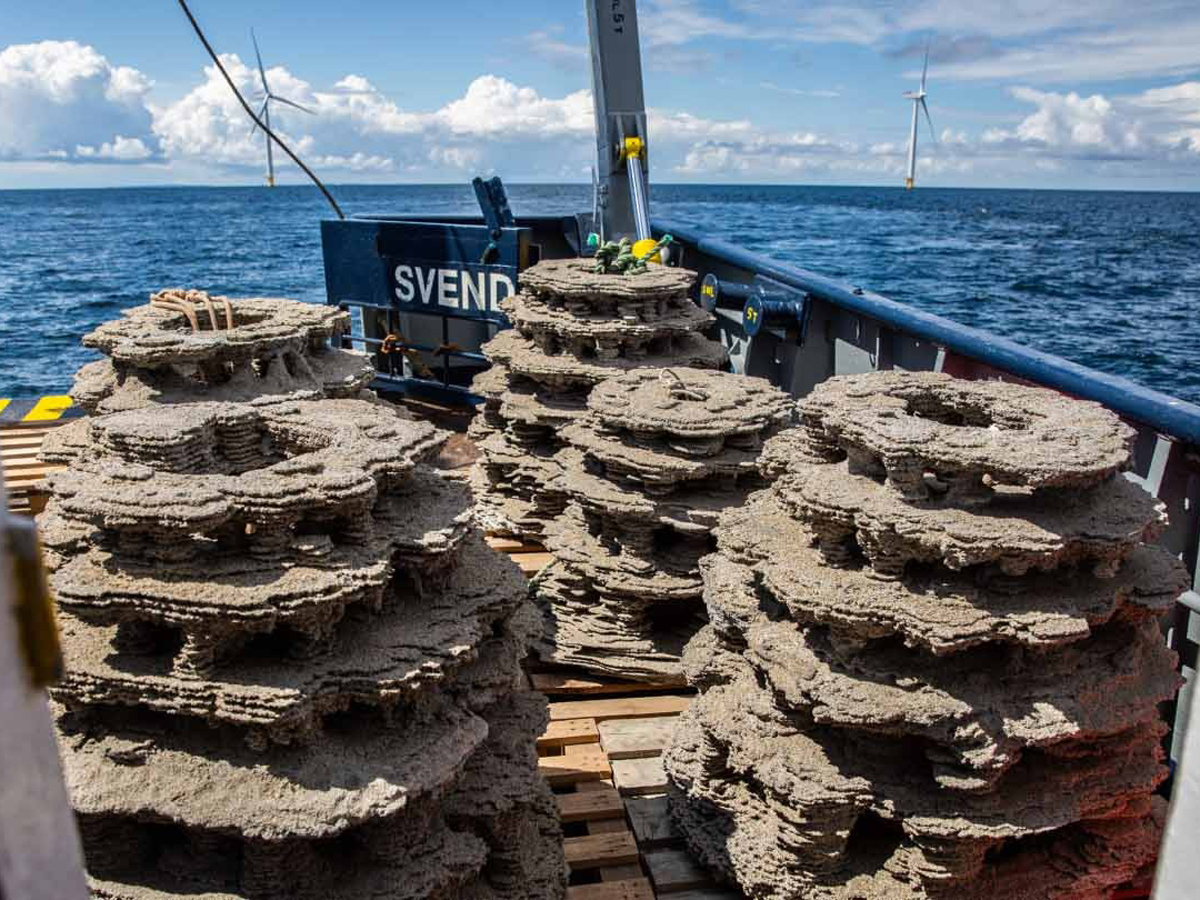
4. Maldives – Reef Design Lab’s MARS System
Reef Design Lab (Australia) deployed the Modular Artificial Reef Structure (MARS) in Summer Island, Maldives. The world’s largest 3D-printed ceramic reef (2018) used hundreds of ceramic modules filled with concrete; within months, it attracted marine life and facilitated coral fragment attachment.
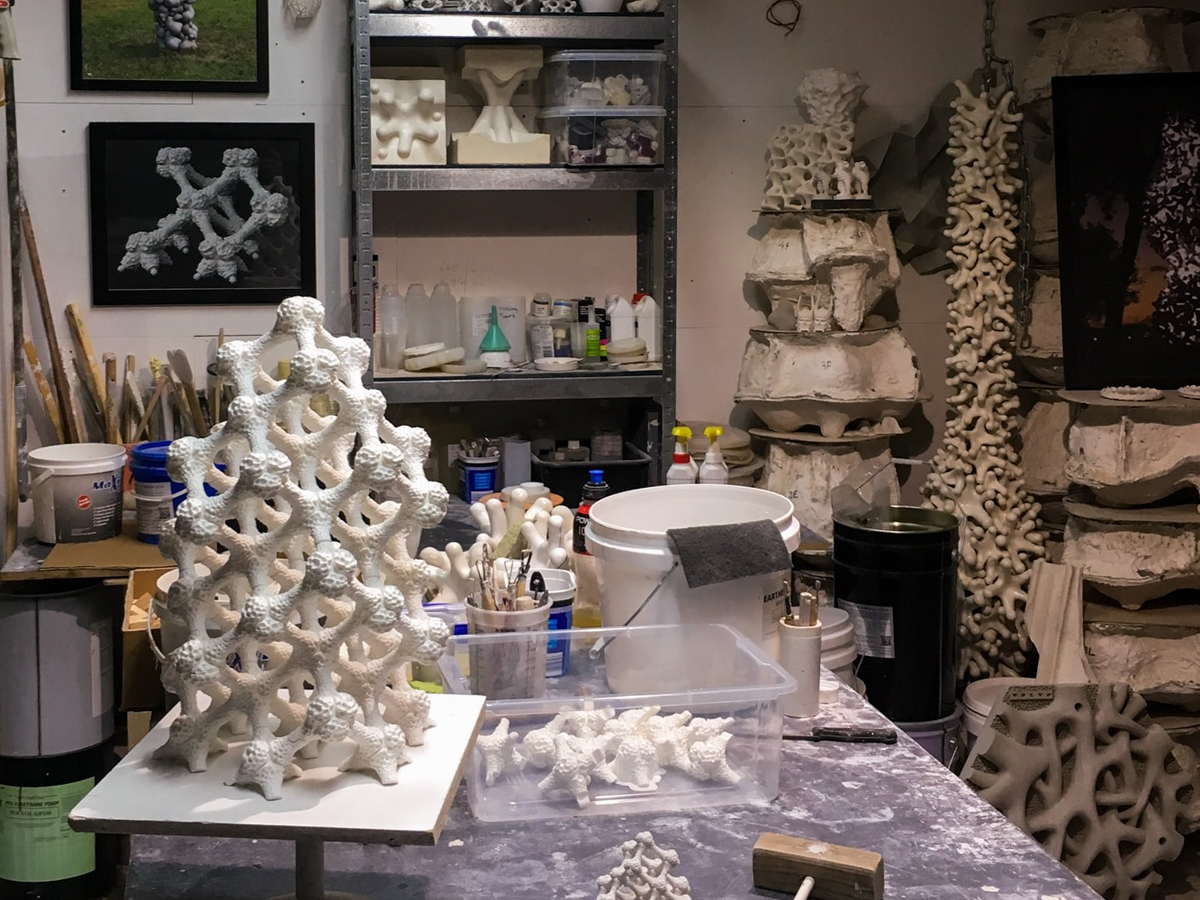
5. Hong Kong – Archireef Terracotta Reef Tiles
Archireef developed biodegradable, pH-compatible terracotta reef tiles 95% coral survival rate over three years—four times higher than traditional methods.Archireef developed biodegradable, pH-compatible terracotta reef tiles that can be installed by divers. In Hong Kong, a deployment achieved a 95% coral survival rate over three years—four times higher than traditional methods.
6. United States – University of Texas at Arlington (2023)
Researchers are developing 3D-printed Roman concrete reefs, inspired by ancient durability, to both restore marine habitats and sequester carbon. Initial cylinder and cube tests in Baffin Bay attracted barnacles and grew stronger underwater over months.
7. Global Overview – Bow Seat Foundation (June 2025)
A feature summarizing worldwide efforts highlighted how 3D-printed reefs offer sustainable, scalable conservation strategies amid alarming UN forecasts of up to 90% coral loss by 2050.
8. Scientific Advancement – Hong Kong Ceramic Tile Study (2025)
A recent study deployed hexagonal, 3D-printed ceramic tiles in a subtropical urban marine environment near Hong Kong, assessing fish and invertebrate abundance via visual surveys and eDNA metabarcoding—showing promise for scalable reef rehabilitation modeling.
Conclusion
3D printing is emerging as a powerful, scalable tool for reef restoration—offering both structural innovation and ecological compatibility. From the Red Sea to the Gulf of Mexico, researchers and communities are leveraging modular designs, biodegradable materials, and data-driven monitoring to rebuild critical marine habitats. While not a panacea, this technology buys vital time and enhances resilience against the mounting challenges coral reefs face.